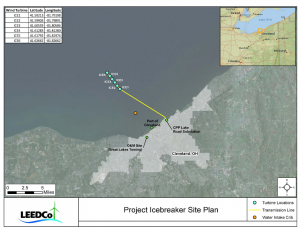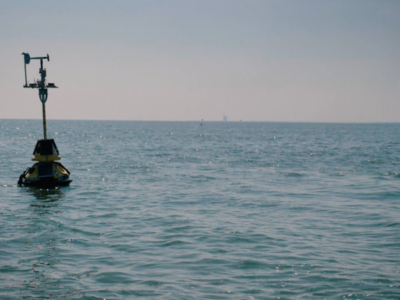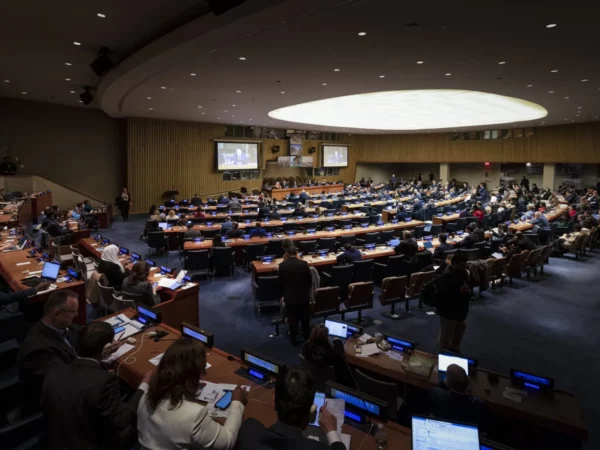
This article was originally published in Great Lakes Today by Elizabeth Miller
Project Icebreaker, a six-turbine demonstration project to be located eight to 10 miles off Cleveland’s shore could finally bring electric wind turbines to the Great Lakes. Ironically, this technology was created in the 1800’s by Charles Brush a native of Cleveland, and while his process of creating renewable energy has popped up around the world, it has never taken root in the Great Lakes region.
Currently the United States only has one operational offshore wind farm located in the waters of Rhode Island. For some, the addition of Project Icebreaker will signal an economic boom with an estimation of 500 construction jobs being added to the area, along with utilities and Cuyahoga County committing to buy power from the turbines. It has also been stated that 6,000 homes in the Cleveland area can expect to receive 10 percent of its energy from the turbines which will barley be visible from the shore.
While the project promises an economic windfall that will enhance the environment, it is not without critics, worries have arisen that harsh weather conditions could damage the turbines, or that the foundation of the turbines would break ice. The international community has also weighed in on the project, with environmental groups in the United Kingdom and Spain condemning it.
John Scofield, a Professor of Physics at Oberlin College is closely following the Lake Erie project, and has called on all parties involved to remain clam; because if the turbines prove to be disruptive to the environment, they can be torn down and the lake floor can be restored to its original state.
Project Icebreaker is still waiting on approval from state, federal agencies and an environmental assessment before construction can commence. But it is becoming clearer that as U.S. ocean waters become assessable to electric wind turbines, the need for clean renewable energy is growing and the Great Lakes could offer more room for expansion.
For more information and other articles like this visit, GreatLakesToday.org





